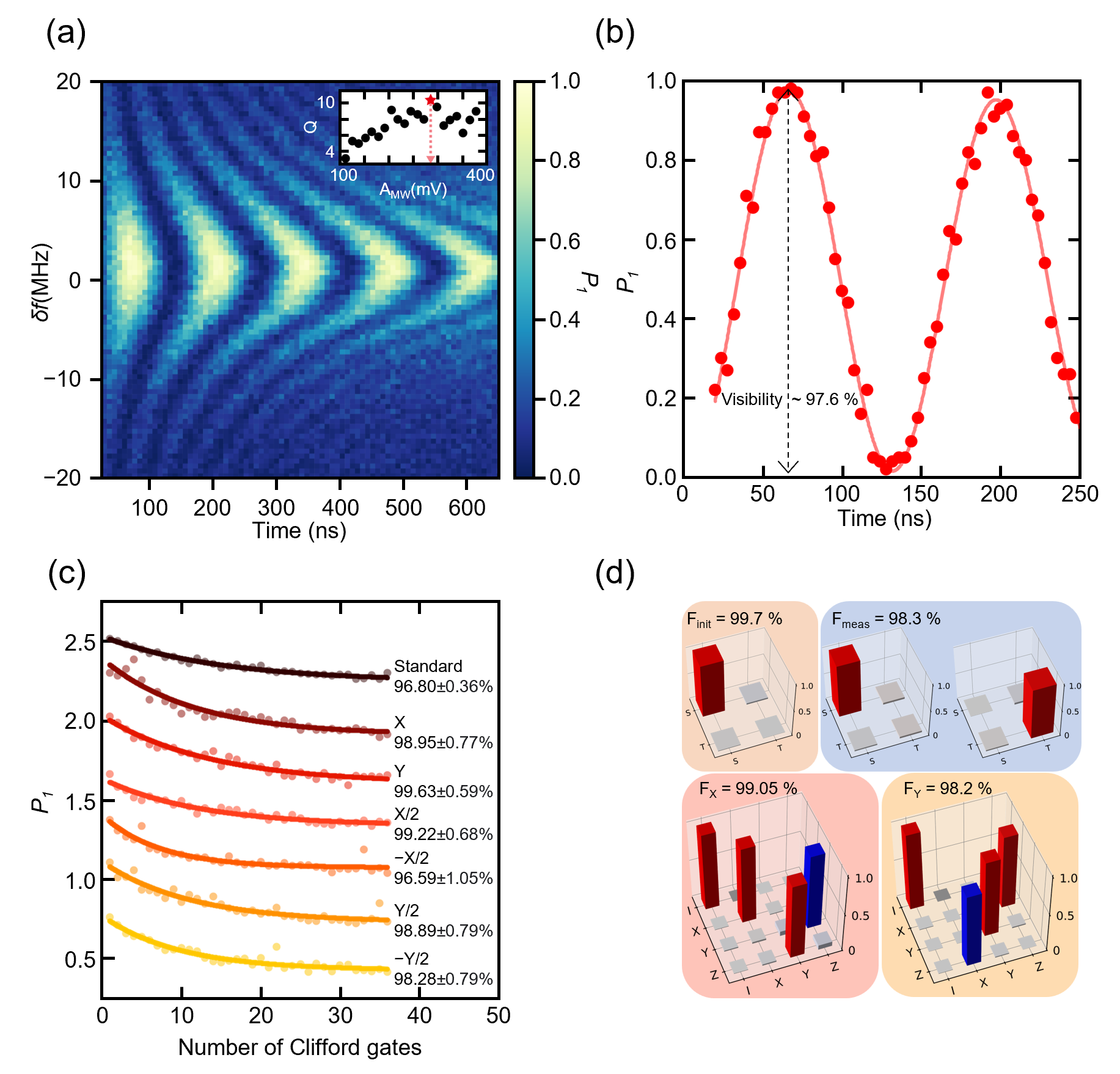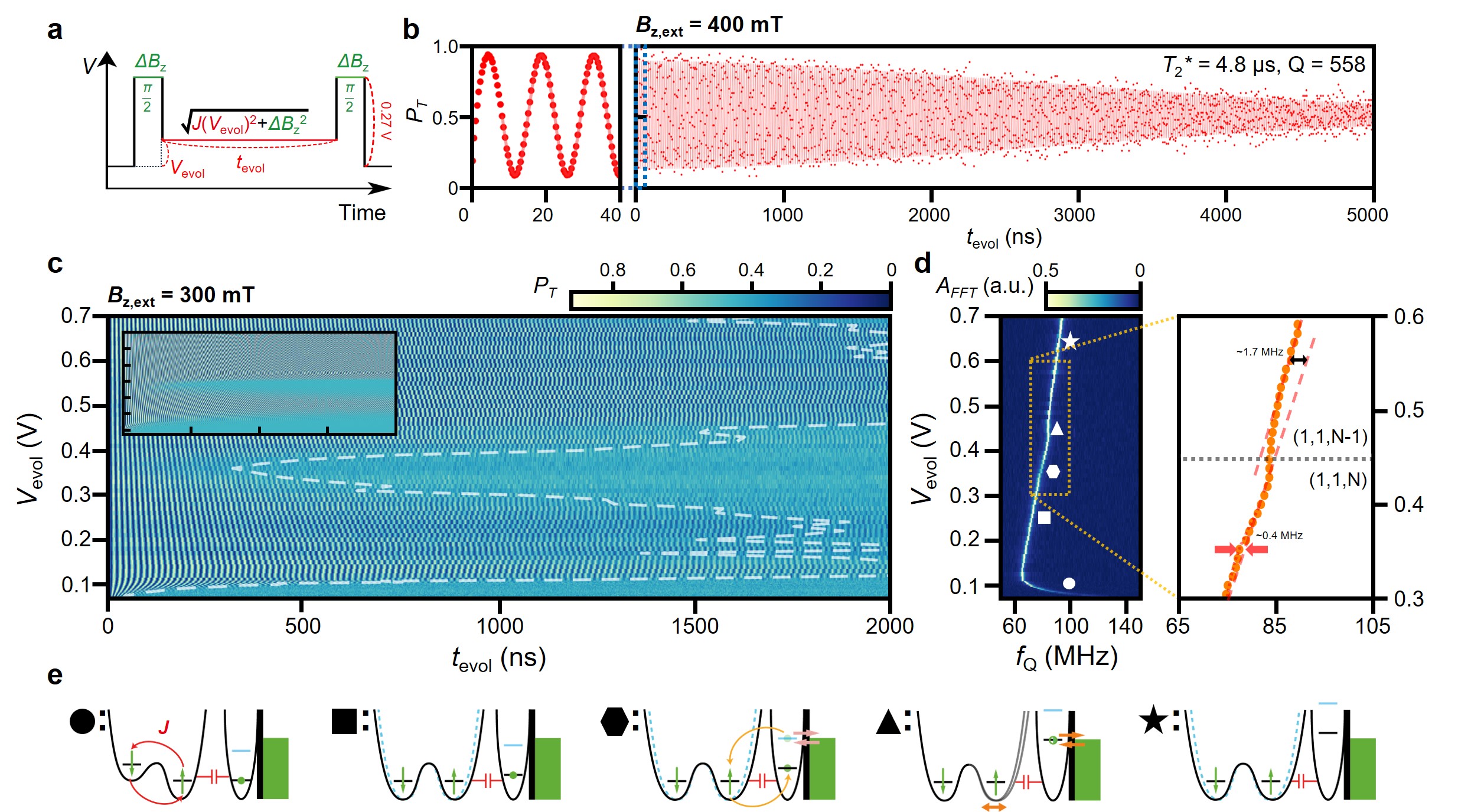Quantum Dot Spin Qubit Experiments Jan. 2022 – Feb. 2023
⌜Performed high-fidelity single- and two-qubit operations in both GaAs and ²⁸Si/SiGe quantum dot systems. Optimized single-qubit gate fidelity to >99.6% using real-time Bayesian Hamiltonian estimation. Discovered and characterized a strong, superlinear two-qubit capacitive coupling (>190 MHz) beyond the bilinear regime. Analyzed qubit coherence as a function of system parameters and demonstrated coherent coupling to ancillary dot spin states.⌟
A central challenge in quantum computing is the high-fidelity control and readout of qubits in the presence of environmental noise.
My research has focused on developing and implementing advanced techniques to address this challenge in semiconductor spin qubits.
These projects were made possible by a comprehensive experimental toolkit for operating and characterizing quantum devices at cryogenic temperatures.
Measurements were automated using the Labber software environment, with quantum dots defined by low-noise DC sources (SRS SIM928) and qubit states manipulated by an AWG and a Zurich Instruments UHFLI.
My hands-on experience includes IQ mixer calibration and programming a Quantum Machines OPX controller using QUA for real-time feedback.
In a GaAs quantum dot array, I implemented a Hamiltonian estimation protocol based on energy-selective tunneling to perform real-time Bayesian inference of system parameters.
By actively feeding back this information, we corrected for quasi-static noise and demonstrated a single-qubit gate fidelity of 99.6%, confirmed via Randomized Benchmarking (RB) and Gate-Set Tomography (GST).
This work was published in Physical Review Letters.
Scaling up quantum processors requires robust inter-qubit coupling. While capacitive coupling between singlet-triplet qubits is typically weak and bilinear, I experimentally demonstrated a strong two-qubit capacitive interaction (>190 MHz) in a GaAs quadruple-dot array.
This interaction exhibited a state-conditional frequency shift that was distinctly beyond the bilinear regime, consistent with recent theoretical predictions, and was published in npj Quantum Information.
To further explore qubit performance in an isotopically purified environment, I characterized singlet-triplet qubits in a ²⁸Si/SiGe double quantum dot.
We achieved fast qubit oscillations (~100 MHz) with a quality factor over 580 and found evidence of coherent coupling between the qubit and the spin states of a nearby quantum dot,
demonstrating that the spin-electric coupling in this system may enable a charge-based two-qubit gate, as detailed in npj Quantum Information.


